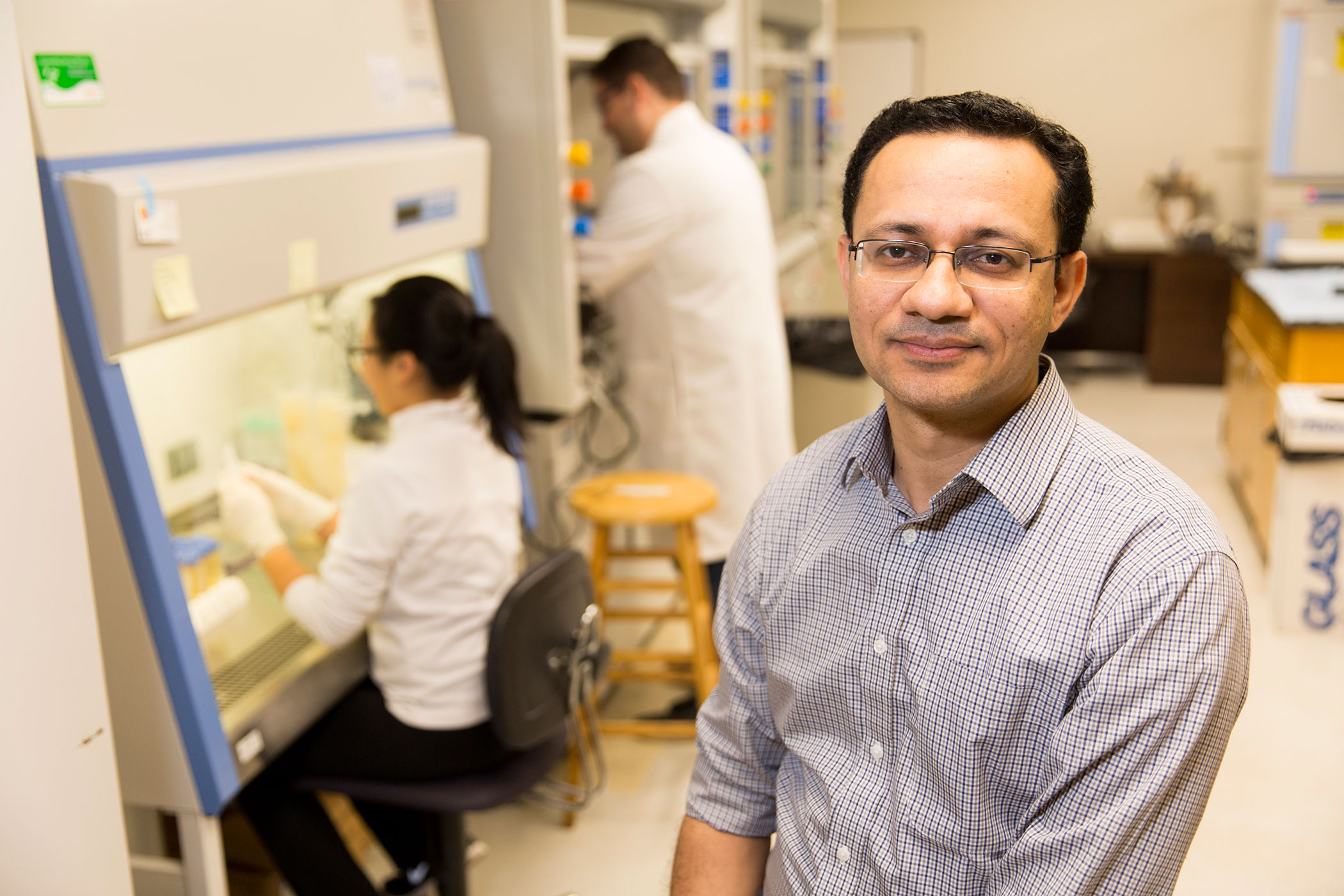Infections acquired in hospitals kill thousands of people in the U.S. each year, and sticky colonies of bacteria known as biofilm that form on medical implants are one of the leading causes of these infections. Thrombosis, or blood clotting, is another potential danger associated with implants.
Now, a University of Georgia scientist is developing a new weapon in the fight against clotting and infections related to medical devices. Hitesh Handa, an assistant professor in the College of Engineering, is designing biocompatible polymer coatings that not only prevent biofilm growth but also attack harmful bacteria by releasing nitric oxide, a naturally occurring gas with potent antimicrobial properties.
Handa’s work recently attracted a four-year, $1.5 million research grant from the National Institutes of Health.
“Current technologies fail to completely address the potentially harmful complications related to medical implants,” Handa said. “Nitric oxide is the focus of this project because it not only serves as an antimicrobial agent, but it also can help prevent clotting on the medical implants such as vascular catheters.”
When a foreign material, including surgical tools and implants, enters the body, the immune system’s initial reaction is to send proteins to the area in an attempt to contain the material. This process is known as protein adsorption (not to be confused with absorption). While protein adsorption can encourage tissue repair by serving as scaffolds for platelets and other cells, it also can produce unwanted events. Platelets and fibrin, a protein that creates a fibrous mesh to impede the flow of blood, can adhere to implants and induce thrombosis.
Handa said intravascular catheters on the market today may work to prevent some potential complications but not all.
For example, some catheters only work to inhibit fibrin formation while ignoring platelet activation, the process by which platelets clump together. Other catheters are coated with antibiotic substances to reduce the risk of infection, but these implants are not designed to counteract clotting.
Physicians often prescribe the blood thinner heparin to prevent clotting, but heparin can increase the risk of bleeding and many patients are allergic to the medication.
“We want to make a catheter that will prevent fibrin formation, platelet activation and infection,” Handa said.
Since nitric oxide donors are heat-sensitive, Handa said the challenges of the project include developing materials—and methods for producing those materials—that can withstand the manufacturing process. In addition, he will have to find ways to extend the shelf life of the catheters.
If successful, Handa believes his nitric oxide-releasing coatings will be applicable to a range of medical devices and implants including vascular grafts, stents, urinary catheters and endotracheal tubes.


